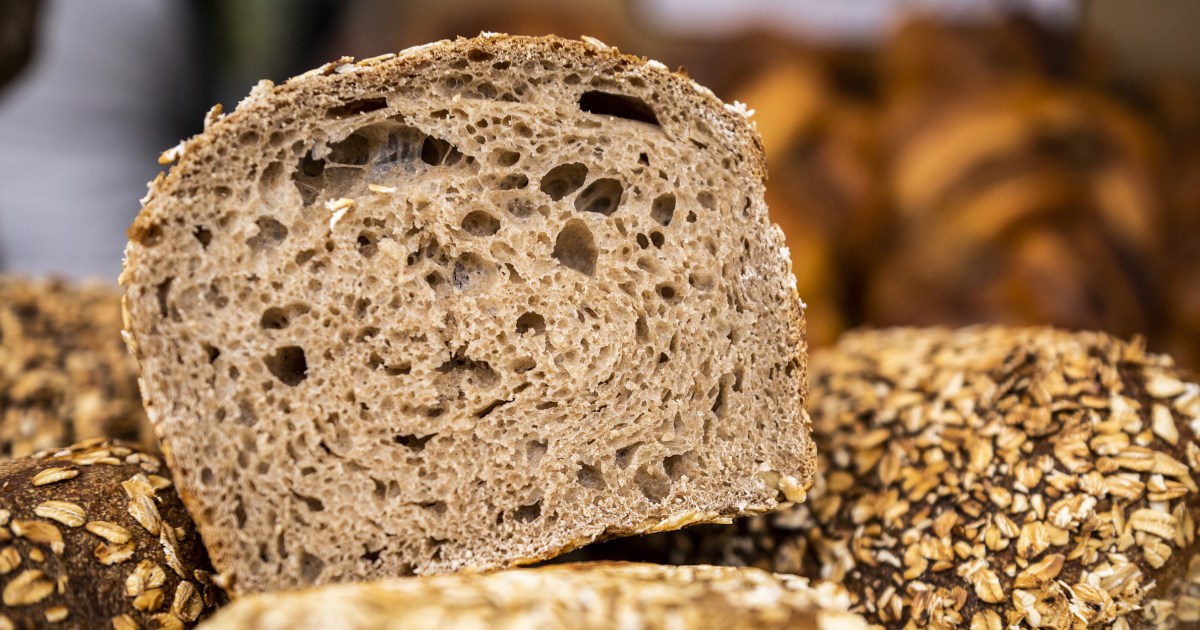It’s not unusual to see packages of bread, crackers, cereals or pasta with a stamp on the front, touting in large letters that they are whole grain. In reality, they may not have much real whole grain in them, a new study suggests.
An analysis of two decades of data on Americans’ diets revealed that people are increasingly choosing whole grain foods, but we’re still not eating enough in our daily diets, Tufts University researchers reported in a study published Wednesday in The American Journal of Clinical Nutrition.
At least half of the grains consumed daily should be whole grains, according to the USDA’s recommendations.
Part of the problem is, people can’t always tell which foods contain a healthier amount of whole grains, previous research has found. That’s likely because — between the Food and Drug Administration, the food industry and research groups and health associations — there are differing definitions of what constitutes a whole grain product, the Tufts researchers noted.
The label on a food item just tells consumers that, by the Whole Grain Council’s definition, each serving has at least 8 grams of whole grain, said study co-author Dr. Fang Fang Zhang, interim chair of the division of nutritional epidemiology and data science at the Friedman School of Nutrition Science and Policy at Tufts University in Boston. The Whole Grain Council is an industry-sponsored group that “stamps” labels on food packaging.
However, the 8 grams might be only a small percentage of the whole serving and the product might also have a lot of added sugars, Zhang said.
For the FDA to label a food whole grain, 51% of the total weight must be whole grain; the research group Cereals and Grains Association requires 8 grams of whole grain for every 30 grams of a food item; and the American Heart Association calculates the ratio of carbohydrates to fiber in defining a whole grain food.
“Consumers need to be careful when they go shopping for whole grain foods,” said Zhang. “They need to look at the back of the package to check the nutrition facts and to determine whether whole grains are at the top of the ingredient list.
What’s important is the percentage of the total grain in the food that is actually whole grain, Zhang said. The 2015-2020 Dietary Guidelines for Americans identifies whole grain foods as those containing 50% or more by weight of the grain- or flour-containing component as whole grain ingredients.
So, what is a whole grain?
Whole grain foods contain three kernel components.
- The bran is the outer covering of the grain and is the main source of fiber.
- The germ, a smaller internal structure, is a source of essential fatty acids, vitamins and minerals.
- The endosperm is the largest part of the kernel and the biggest constituent in white flours and breads. It provides carbohydrates, protein and B vitamins.
Consuming whole grain foods is important because they have been linked with a reduced risk of colorectal cancer and heart disease, Zhang said. “If we can continuously improve whole grain consumption in the population, the benefit would be a reduced disease burden,” she added. “And that could save a lot of money on health care.”
To take a closer look at trends in whole grain food consumption, Zhang and her colleagues turned to dietary data from the National Health and Nutrition Examination Survey between the years 2003 and 2018. NHANES asks participants to list all foods consumed in a 24-hour period.
For their analysis, Zhang and her colleagues focused on data from 39,755 U.S. adults aged 20 and older. Overall, the amount of whole grain foods consumed increased during the study period.
How to tell if it’s a whole grain
The only way to know whether a product really is whole grain is to look at the ingredient list, Zhang said.
If a whole grain is at the top, that means the product really can be called whole grain, she said.
The issues addressed in the study need to be more widely known, said Jennifer Cholewka, a metabolic support dietician at the Mount Sinai Hospital in New York.
“People are trying to make healthy choices and in today’s market there are a lot of health buzz words out there,” said Cholewka, who was not involved with the new research.
For example, when a product is described as being made with whole grains, that doesn’t mean it’s 100% whole grains, Cholewka said. “What I tell my patients is to look at the nutrition label and the ingredient list.”
Whole grain foods include:
- Whole wheat bread
- Oatmeal
- Whole grain pasta
There are a lot of sources of whole grains that people might not immediately think of, such as popcorn, quinoa, barley and farro, Cholewka said,
Nutritionist Samaneh Farsijani said it was a carefully done study.
“I think it’s a great study, especially since they used the NHANES data,” said Farsijani, an assistant professor in the department of epidemiology at the University of Pittsburg School of Public Health. “The 24-hour food recall is one of the best in terms of precisely assessing food intake.”
Farsijani recommended the USDA Dietary Guidelines’ “MyPlate” explainer as the best way to know how much whole grain needs to be consumed each day.
Share your story or advertise with us: Whatsapp: +2347068606071 Email: info@newspotng.com





![Tinubu appoints board of SEC [Full names]](https://newspotng.com/wp-content/uploads/2023/06/Tinubus-emergence-will-of-God-–-APC-pastor-218x150.jpg)




![Tinubu appoints board of SEC [Full names]](https://newspotng.com/wp-content/uploads/2023/06/Tinubus-emergence-will-of-God-–-APC-pastor-324x235.jpg)



![Tinubu appoints board of SEC [Full names]](https://newspotng.com/wp-content/uploads/2023/06/Tinubus-emergence-will-of-God-–-APC-pastor-324x160.jpg)
